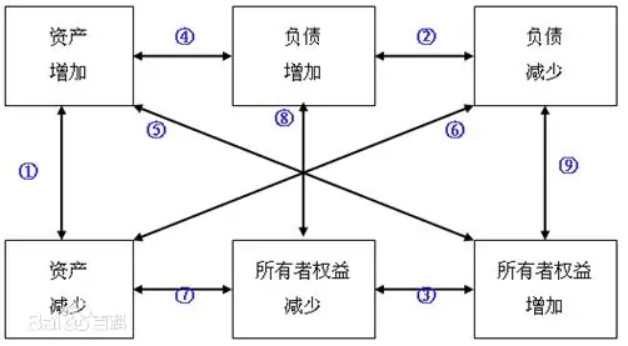Owner’s equity refers to the remaining equity enjoyed by the owner after deducting liabilities from the assets of the enterprise. The owner's equity of a company is also called shareholder's equity. Owner’s equity is the owner’s right to claim the remaining assets of the enterprise. It is the part of the enterprise’s assets that should be enjoyed by the owner after the creditor’s equity is deducted. idea.
The sources of owner’s equity include capital invested by the owner, other comprehensive income, retained earnings, etc., usually consisting of equity (or paid-in capital), capital reserve (including equity premium or capital premium, other capital reserve), and surplus reserve And undistributed profits.
The capital invested by the owner refers to the part of the capital invested by the owner in the enterprise. It includes both the amount that constitutes the registered capital or equity of the enterprise, and the amount of capital invested in excess of the registered capital or equity, that is, capital premium or equity premium. The invested capital is reflected as capital reserve (capital premium).
Other comprehensive income refers to the various gains and losses that the enterprise has not recognized in the current profit and loss in accordance with the accounting standards.
Retained income refers to the internal accumulation that the enterprise extracts or forms from the profits realized over the years and is retained in the enterprise, including surplus reserves and undistributed profits.
The so-called owner’s equity refers to the ownership of the company and the net assets of the company and enterprise investors, which is the balance of all the assets of the company and the enterprise minus all the liabilities. Owner’s equity indicates the property relationship of the company or enterprise, that is, who owns the company or enterprise. Owners’ equity includes invested capital, capital reserve and retained earnings, etc. The invested capital refers to the "capital" invested by the company or the owner of the company and the enterprise. It can be invested in monetary funds, physical assets such as houses, equipment, etc., or intangible assets such as patent rights; capital reserve fund Mainly derived from capital premium (such as the part of the premium that exceeds the par value when issuing stocks), accepting donations from others, and appreciation of asset valuation, etc.; retained earnings mainly include undistributed profits, surplus reserve funds drawn by enterprises, etc.
Wiki Owner's Equity
所有者权益,是指企业资产扣除负债后,由所有者享有的剩余权益。公司的所有者权益又称为股东权益。所有者权益是所有者对企业资产的剩余索取权,它是企业的资产扣除债权人权益后应由所有者享有的部分,既可反映所有者投入资本的保值增值情况,又体现了保护债权人权益的理念。
所有者权益的来源包括所有者投入的资本、其他综合收益、留存收益等,通常由股本(或实收资本)、资本公积(含股本溢价或资本溢价、其他资本公积)、盈余公积和未分配利润等构成。
所有者投入的资本,是指所有者投入企业的资本部分,它既包括构成企业注册资本或者股本的金额,也包括投入资本超过注册资本或股本部分的金额,即资本溢价或股本溢价,这部分投入资本作为资本公积(资本溢价) 反映。
其他综合收益,是指企业根据会计准则规定未在当期损益中确认的各项利得和损失。
留存收益,是指企业从历年实现的利润中提取或形成的留存于企业的内部积累,包括盈余公积和未分配利润。
所谓所有者权益,是指公司、企业投资人对公司、企业净资产的所有权,是公司、企业全部资产减去全部负债后的余额。所有者权益表明公司、企业的产权关系,即公司、企业是归谁所有。所有者权益包括投入资本、资本公积金和留存收益等。其中投入资本即公司、企业所有者投入公司、企业的“本钱”,既可以用货币资金投入,也可以用实物资产如房屋、设备等投入,还可以用无形资产如专利权等投入;资本公积金主要来源于资本溢价(如发行股票时超过面值的那部分溢价)、接受他人捐赠、资产评估增值等;留存收益主要包括尚未分配的利润、企业提取的盈余公积金等。
